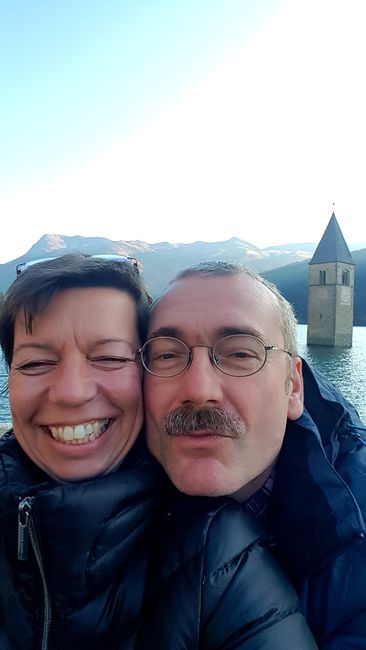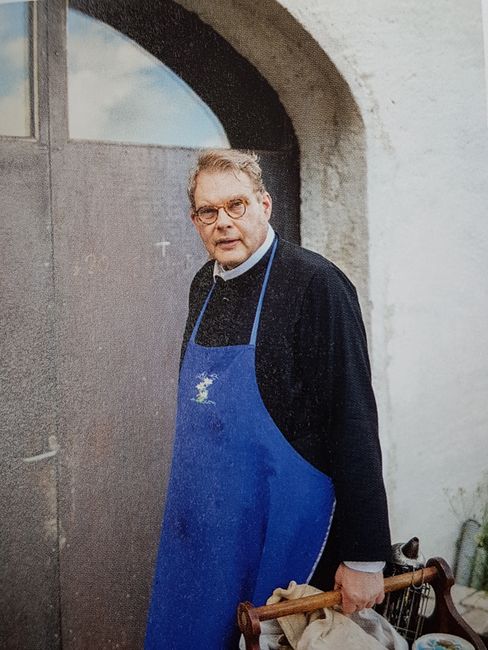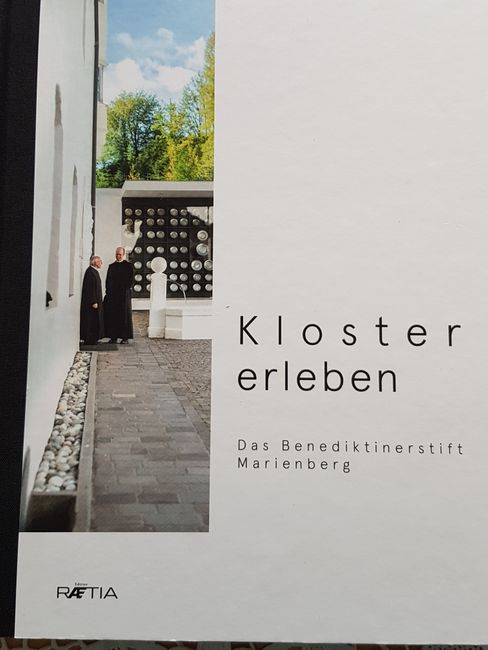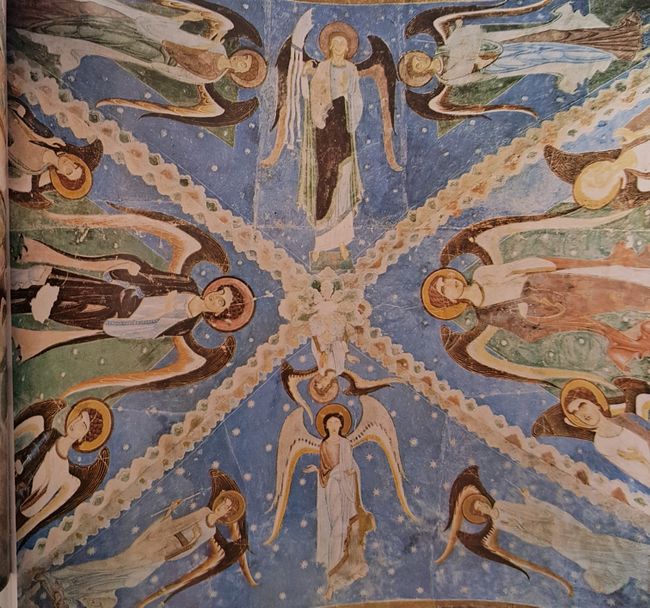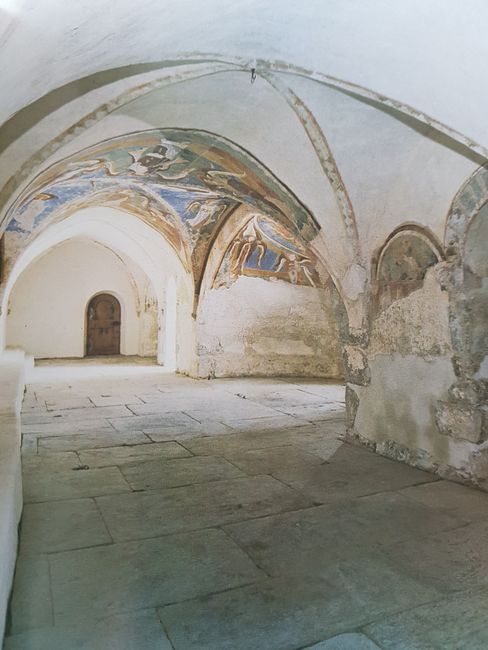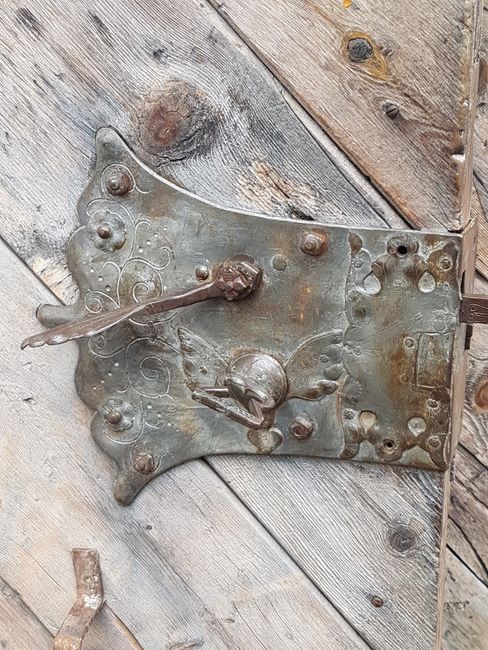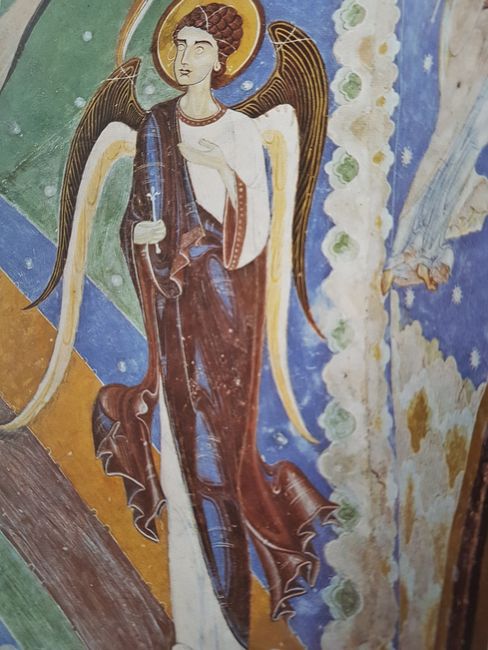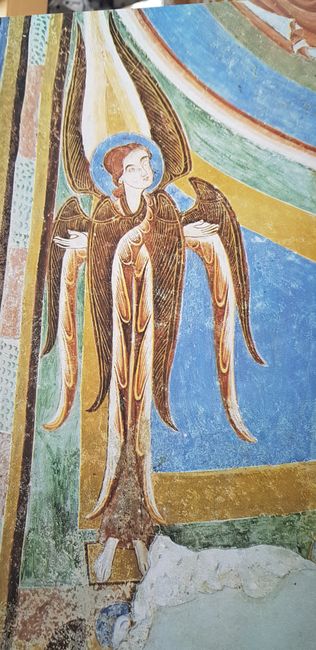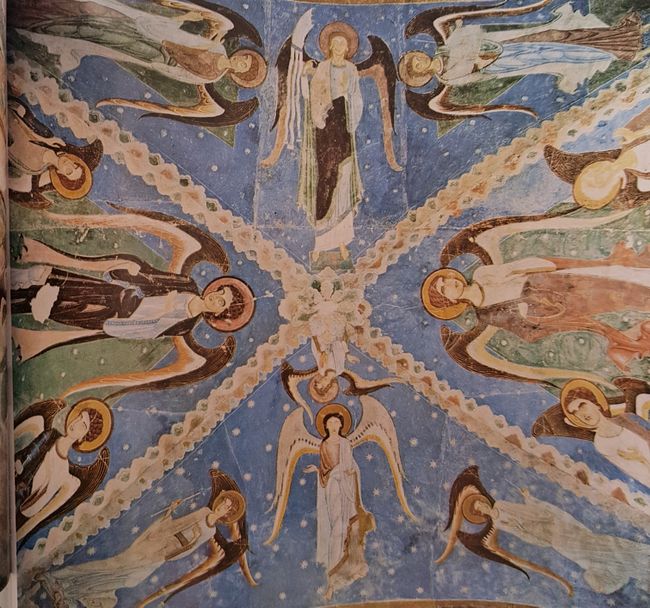Crypt in Marienberg Monastery
പ്രസിദ്ധീകരിച്ചു: 24.10.2019
വാർത്താക്കുറിപ്പിലേക്ക് സബ്സ്ക്രൈബ് ചെയ്യുക
This morning we set off for the weekly guided tour of the crypt in Marienberg Benedictine Monastery. In the monastery, we were picked up at the museum gate by Father Anselm, one of the 10 monks currently living in the monastery.

There were about 15 interested people with us. And off we went through modernly designed corridors downhill. To the right of the Marienkapelle was the entrance to the crypt. It was noticeably cooler than outside, and it was only 13 degrees there... In the elongated crypt (approx. 3.6 m x 11 m), there was a large central apse (is this the correct word?), where the altar is located, and two lateral vaults.
Since photography was not allowed in the crypt, I took photos from a book (@Benedikt: Thank you!). The photo shows the crypt without an altar and seating.

Behind the altar, along the semicircular outer wall, there was a metal bench that was thankfully covered with a protective felt pad. The high Romanesque frescoes on the ceiling vault were almost within reach, and they had a very intense colorfulness.

Father Anselm (by the way, now I know the difference between Father and Brother... both live in the monastery, but the Father is an ordained priest, while the Brother is just a 'normal' monk) explained to us for about 1 hour really interesting details about the creation, the peculiarities, the color meaning, and the symbolism. He told everything freely, and it was clear how emotionally involved he was in all of this.
Of course, I was interested in the design details:
Why are the figures elongated like this?

Why are there angels with 6 wings? What do the hands on the wings mean?

Why are some angels standing on a pedestal (pedestra)? What do the colors mean and what are they made of?
Father Anselm explained to us the color blue (lapis), which is actually white and only turns blue through a chemical reaction.
What do the band-like decorations in the hair of the angels mean? What do the lines on the wings of the angels mean?

It was astonishing, Father Anselm was able to answer all the questions comprehensively. And it was also entertaining. He could relate many details to the Bible, and you could often tell how deeply he was moved by these frescoes. It was very surprising that a large part of the frescoes had been professionally restored by a former abbot. When the professionals took over, the frescoes were heavily damaged. They used hammers and chisels, and the plaster and paint crumbled from the wall. You could clearly hear the disbelief in Father Anselm's voice at this point... Until 1980, about half of the crypt was occupied by tombs of deceased monks. The tombs were dismantled, and the remains were buried in the cemetery so that the covered frescoes could be revealed. These frescoes are now the best-preserved in the crypt.
In the picture with the partial ceiling view, you can see the horizontal line up to which the tombs concealed the painting.
In addition, Father Anselm, who is also responsible for the monastery garden and takes care of the 12 beehives, told us about life in the monastery and how the monks live. It was very exciting for me to hear this live. We actually have a bookshelf in our house with a beautifully laid out book about Marienberg Monastery:

And of course, I have already skimmed through it in the past few days... there was plenty of reading weather...
After the tour, which was truly a special experience, I had a delicious lemon verbena tea in the ultra-modern monastery café (wood and glass) (probably from the monastery garden).

In addition, we stocked up on some literature in the monastery shop.
We can really recommend visiting the crypt! From March to the end of October, every Thursday at 10:30 a.m.
Afterwards, we prepared and devoured delicious spinach dumplings with Leberkäse as lunch.
Then we went on a culinary tour to the butcher in Mals. The website promised South Tyrolean specialties. And I was looking for Coppa (smoked pork neck). 'Unfortunately,' there was no Coppa left, so we decided to take some smoked pork fillet and Hirschwurzen instead. They taste good too!
And then we went to the sauna area in Mals, where we had free admission with our guest card. Here we experienced a very extraordinary infusion, an 'air journey.' As experienced sauna-goers, we have already experienced a lot, but Ritschie offered a highly aesthetic, almost dance-like performance with his towel and soup ladle-sized ice balls on the sauna stove, almost making us forget about the time and the increasingly hot temperatures! The rain that started again was a welcome refreshment for us who were wonderfully relaxed. And let's be honest: considering that in Italy the bad weather does not stop in several places, we really can't complain here!
We send you warm greetings from South Tyrol!
വാർത്താക്കുറിപ്പിലേക്ക് സബ്സ്ക്രൈബ് ചെയ്യുക
ഉത്തരം

